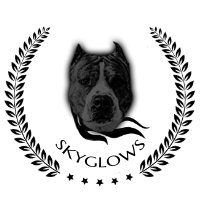American staffordshire terrier
We have a new puppy ♥
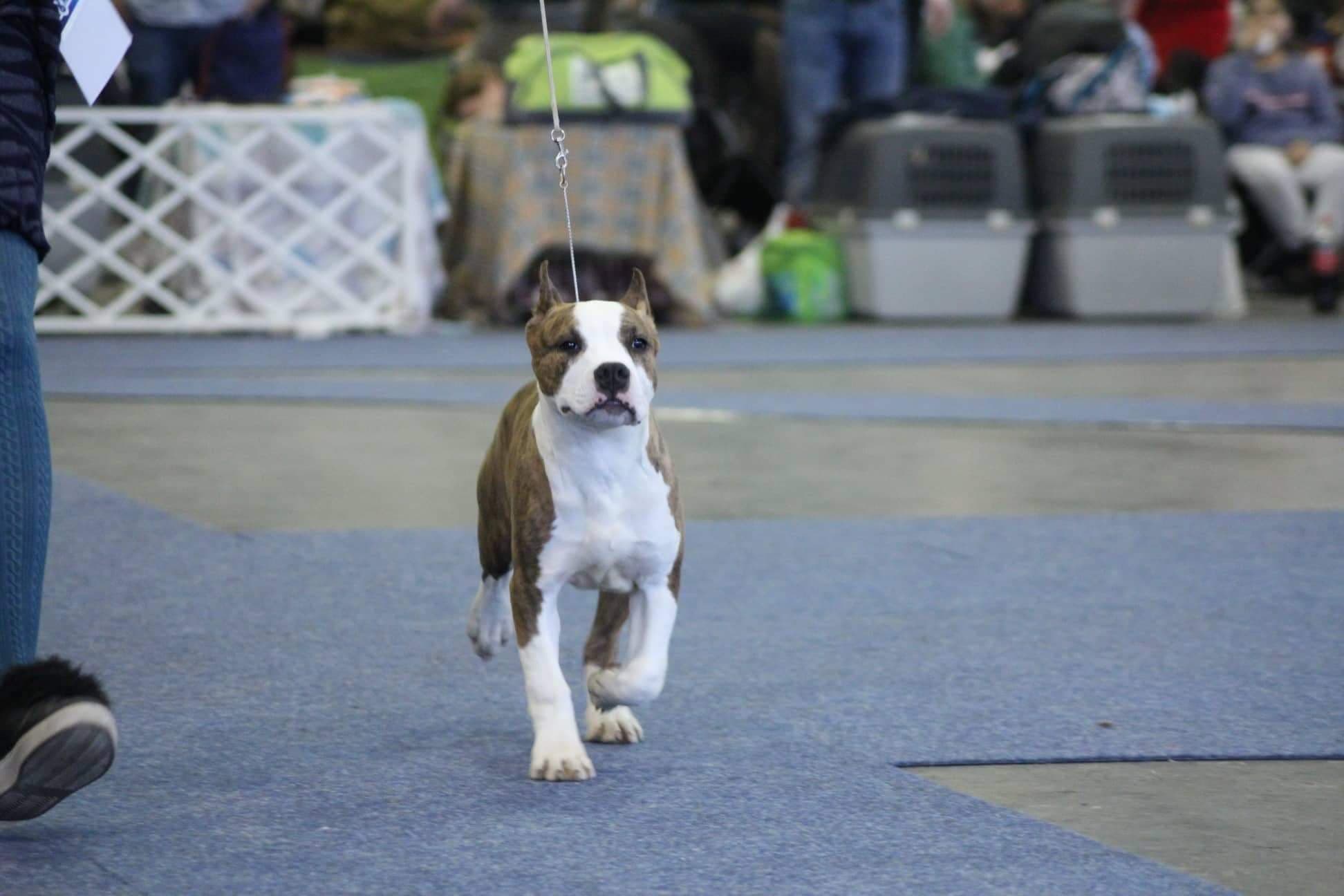
FIRST STEPS with a puppy
The arrival of a new puppy in the household is very exciting, but it can also be stressful, both for you and for the puppy. The puppy left the mother and siblings, left the environment to which he was accustomed and found himself in an unknown place full of unknown smells and stimuli.
Here are some tips to keep in mind when getting your puppy used to a new environment.
The first piece of advice we should follow ALWAYS communicate with the puppy in peace, do not panic and stress, do not humanize the puppy and give him enough space for his mental and physical development.
Believe me, your puppy will grow into a balanced and satisfied dog that will be your faithful and devoted companion for the rest of your life.

BEFORE ARRIVAL PUPPIES
Before the arrival of our dream puppy we have to prepare the environment for the puppy, buy basic equipment, food for the puppy and a very important thing we should not forget in case it is our first puppy AST we should be familiar with the breed, characteristics of the breed and character traits.
Basic equipment of the puppy:
- food bowl
- water bowl
- quality feed
- treats / biscuits /
- cage - lair
- blanket
- toys
- collar
- leash
- puppy pads
- excrement bags

FIRST DAY WITH PUPPIES
The day of arrival of your dream puppy has arrived. It is a big day for a puppy full of changes and sometimes a feeling of abandonment, separation from mom and siblings. The puppy can feel stressed out of all new stimuli. Therefore, it is up to you to help him feel happy and safe with you.
Puppy welcome:
- bring the puppy to a house where harmony and peace reign
- leave him alone to get acquainted with the new environment
- allow him to stay outside to carry out the need
- lend the puppy his own space, do not overload him with your attention, too much attention can cause tension that the puppy cannot process
- keep an eye on the puppy at all times
- treat him rest
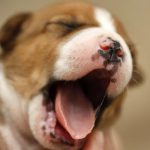
FIRST NIGHT WITH PUPPIES
After a colorful day, the first night comes with your new family member. Some puppies can handle it without a problem, but some feel abandoned and require our attention.
The most ideal place for sleep and rest for a puppy is a cage that evokes a sense of security in him and we are sure that nothing will happen to the puppy and it is okay. Therefore, it is important to teach the puppy to stay in the cage from the beginning, it must never be a punishment. The puppy is tired after activity and staying outside and needs his privacy and peace to rest and sleep, which is an ideal place for a soft bed in a cage. The puppy is not disturbed by anyone, at the same time he gets used to staying in a cage and we are sure that he is safe.
If at night the puppy requires our attention by whining, take it to do so, but if the whining was caused only by a feeling of loneliness, calm the puppy in a calm voice.
The puppy needs about 18 hours of sleep a day for his proper mental and physical development. Therefore, give him enough rest.
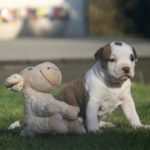
PUPPY FEEDING
The puppy should be fed at the beginning as with the breeder, who will also acquaint you with the amount of feed ration, time schedule and diet that was given to the puppy. diarrhea. You should feed the puppy in a quiet place where it will not be disturbed and there will be no reason to react to the food. At this age we feed three times a day, always after activity, and after feeding we give the puppy a rest. At 16 weeks of age, the puppy can be fed twice a day.
When changing the feed, care must be taken, slowly adding new feed to the previous batch until the puppy gradually switches to the new feed. When changing the feed, watch the puppy to see if the feed suits him and the puppy is prospering properly. When feeding, it is very good to follow regularity and it is also advisable to feed the puppy in one place where he has his peace.
The puppy must always have a bowl of fresh water available !!!
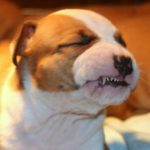
VETERINARY CARE
The puppy from the breeder should go to the new owner at the age of 8 weeks, chipped, regularly dewormed and vaccinated twice.
The vaccination schedule for puppies looks like this:
1. vaccination at 6 weeks of age against canine distemper, parvovirus, infectious hepatitis and parainfluenza
2. revaccination at 8 weeks of age against canine distemper, parvovirus, infectious hepatitis, parainfluenza and leptospirosis
3. revaccination at the age of at least 12 weeks against canine distemper, parvovirus, infectious hepatitis, parainfluenza, leptospirosis and rabies
Then it is necessary to vaccinate the dog for up to a year against these infectious diseases. Subsequent rabies vaccination is individual and depends on the vaccine manufacturer.
The basic diseases against which puppies are vaccinated are those that occur in our country and can be fatal for puppies.
There are also additional vaccines, for example against pertussis cough, Lyme borreliosis, babesiosis, tetanus, dermatophytosis and the like.
Side effects may also occur after vaccination in both puppies and adult dogs. A painful swelling may develop at the injection site, which will absorb over time. The animal may be more apathetic after vaccination and may have a slightly elevated temperature, which is the immune response to the vaccine. The dog should therefore have a rest regime after vaccination. However, if other symptoms occur and they persist for a long time, be sure to see your veterinarian.
And don't forget to regularly deworm your dogs every 3 months.

SOCIALIZATION OF PUPPIES
The socialization of the puppy starts with the breeder. These first two months are very important for effective socialization. Therefore, future owners should carefully choose the breeder from whom they will buy their future puppy.
What to look for when choosing a puppy:
- environment at the breeder
- experience and breeding service
- breeder communication
- parents of puppies
- health of parents of puppies
- care and socialization at the breeder
Socialization is a process in which a puppy gets acquainted with the world around him, gets to know people, sounds, new environment and a lot of experiences. He gets used to the world around him and learns to be self-confident and balanced in different life situations. That is why proper socialization is so crucial for your future life with your puppy.
Advice in conclusion: When working with a puppy, learn to be calm and balanced, do not overload the puppy, be patient and in any situation give the puppy a sense of security and confidence.
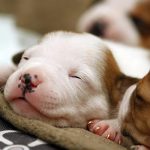
CLUB MEMBERSHIP
As the name AST implies, we have a terrier puppy at home that belongs to a group FCI III– teriéri a sekcie 3 Teriéri typu bull.
SKCHTaF is an organization that brings together breeders, owners and fans of terrier breeds. The club manages the breeding of terriers in accordance with the applicable standard and FCI regulations. It takes care of increasing breeding, promoting the breed, supports the use of terriers, whether in hunting, sports cynology and other activities.
SKCHTaF organizes exhibitions /club and špeciálna/ on which it is possible to include our dog in breeding
Conditions that an individual must meet in order to be included in the breeding:
- Age minimum 9 months
- Participation in an exhibition / club, special / and assessment of an individual with a mark Excelent or Very Good.
- Checking teeth for this show /bite must be scissor, they may be missing 4 teeth - P and M / of our breed, recording the result of teeth control in PP. Missing and incorrect positioning of the eye teeth is not allowed.
- From the age of 12 months can be a dog used for breeding 12 mesiacov.
After fulfilling these breeding conditions, the owner of the individual will send the original of the Certificate of Origin and a photocopy of the relevant exhibition report together with the application for the preservation of the individual for Slovenský poľovnícky zväz, oddelenie kynológie, Štefánikova 10, 811 05 Bratislava.
The application for SKCHTaF is published on our Homepage in the upper left corner Download: register club
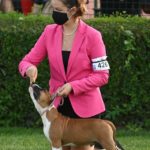
TRAINING PLAN
Everything we are going to do with our puppy needs be done with absolute love and in calm way.
Everything we are going to do with our puppy needs be done with absolute love and in calm way. Puppy we are going train with must to be hungrier than usual so he can show more interest in treats. Treats and toys are always the best motivation. We can use kids biscuit sticks or smooth sausage.
For the first trainings, we take a soft leash with a collar that does not restrict the puppy's movement in any way, but we can correct his movement and posture with it. The puppy's movement should be cheerful, lively and spirited, but we should always have it under control.
With the practice of movement, we also move into the practice of posture. We must always pay attention to the correct position of the limbs, the correct back line and the expression of the puppy and the correct chest tension are also important. Muscle memory works in dogs, which we must keep in mind, because if we put the dog in a bad position, it will become a habit and it will be very difficult for us to eliminate these errors in the future. Therefore, I emphasize again - let's do everything in peace, but be consistent.
Training:
Putting on the collar: Put on the collar so that it is just under the neck behind the dog's head, gently tighten it and in this position we have to keep it in feeling with the whole time during the training. When released, we must always put it back in this position. The collar is a very important element and serves us for the overall control and manipulation of the puppy. It's like a steering wheel for a driver in a car. The collar also outlines the head and neck of the puppy and at the same time we can correct the excess skin on the neck.
We put the collar with the leash in the right position, catch his attention with a treat and set it in motion. In case of loss of interest, we will once again attract his attention with a treat. It takes repeated training until the puppy learns to run beautifully independently on its own. We always train for a while to make the puppy pleasant and have fun and a good experience.
We enter the posture phase: The puppy is walking or running slowly and we have to stop him and put him in front of the judge. Again, I will use the collar and the leash when I gently pull it back in motion with a gentle pull back / this will indicate to it that it should stop /. I hold the leash in my left hand the whole time. I pull the puppy with a pull and with the right hand I fix the collar under my neck and I put the puppy in the right position. The hand must be firm or the puppy will scatter to the sides and unwanted positions. The handler's hand must always be firm but kind. We still have to keep in mind that I control the dog with my collar. Through the collar they will learn to perceive our requirements. When the puppy can be placed in the desired position, the reward and praise of the puppy immediately follows. Trainings must be short and fun. During training I never catch a puppy under the belly, then they get used to crouching !!!
POSITION:
Forelegs perpendicular to the ground, elbows closed, i.e. elbows must be placed nicely under the chest at the body.
HINDQUARTERS: Heel perpendicular to the ground / Exercise - Grasp the hind leg by the heel, bend under the body and then place it in the correct position.
The length of the posture is also important, we make sure that the puppy is not hunched over, the posture is not shortened. The puppy must be harmonious, balanced and the limbs in the correct position.
Teeth examination: Gently grasp the puppy under the parrot, raise the lips, look at the teeth. All gently so that the puppy is not uncomfortable.
I wish you a lot of patience and love during the training of your puppy !!!
